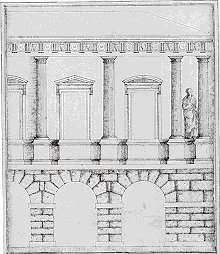Styles
The orders of architecture
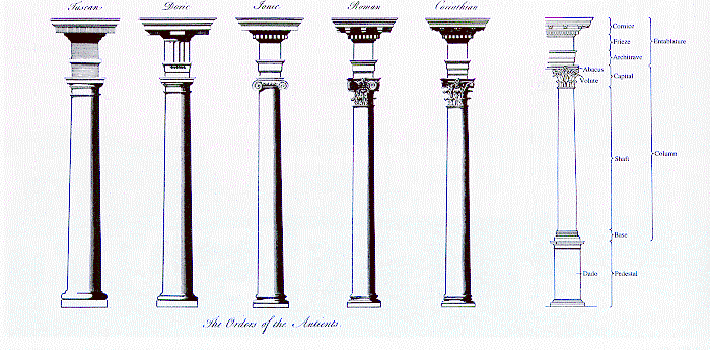
- The orders of architecture
- [click on the picture to enlarge it]
The use of the orders of architecture was subject to rules. Apart from the proportions between the various elements, which were fixed for each order, their possible combinations depended on their degree of complexity, from the simplest (to the left of the illustration) to the most complex (to the right) : if they were superimposed in the storeys of a house, the most austere among those selected were to be in the lower storeys, and the most adorned in the upper storeys (thus the doric order could be topped by the ionic, or the ionic by the corinthian - the intermediary orders such as the ionic could act as the less decorated order relative to the corinthian, or as the more decorated relative to the doric). In interior decoration, the same scale of ornamentation would also serve to emphasise the progression of the various rooms towards the most solemn one.
Such combinations were frequently used in Bath.
Architecture was also characterised by the use of architectural motifs.
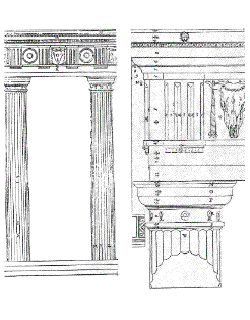
- Doric order
- [click on the picture to enlarge it]
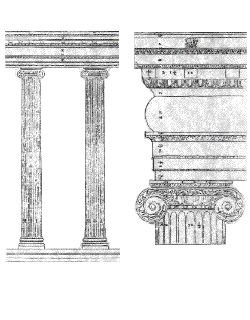
- Ionic order
- [click on the picture to enlarge it]
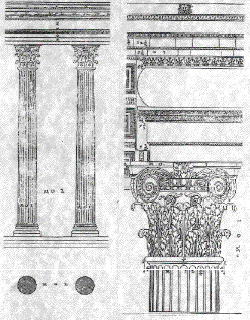
- Corinthian order
- [click on the picture to enlarge it]
Architectural motifs
Rustication : emphasised recessed joints between the stones, or rough texture on the facing of a stone — a type of masonry common in the lower floor of Italian palazzo, contrasting with the smooth ashlar of the piano nobile ; most often “chamfered” (V-joined rustication) or “smooth rustication”.
Venetian window : a window with three lights, the two side ones being rectangles, the higher central one topped by an arch supported by columns — a Palladian architectural motif, so called since Palladianism originated in the Veneto (sometimes called “Serlian window” from Serlio, whose architectural treatise was used as a sourcebook) .
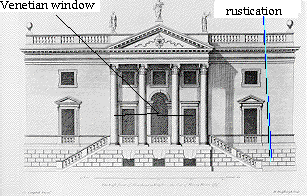
- East front
- Campbell, Stourhend, Wiltshire (1719 onwards). East front. Engraving from Campbell, Vitrusius Britannicus III (1725), plate 42, National Library of Scotland, Edinburgh.
[click on the picture to enlarge it]
Examples:
- Charlotte Square in Edinburgh
- Pulteney Bridge in Bath
- Blackfriars Bridge in London
- Somerset House in London
- Whitehall in London
Architectural motifs would be combined with the appropriate orders of architecture.
The Venetian window and other Palladian motifs were satirised by Hogarth in Marriage a la Mode and in the Election Series.
Palladianism
Palladio’s I Quattro Libri dell’Architettura and his buildings remained an inspiration throughout the 18th century.
Kent was one of the major Palladian architects in Britain.
Motifs such as the Venetian window and the Palladian Bridge were frequently imitated, as well as his reconstruction of ancient columns.

